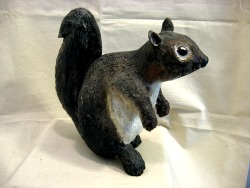Conrad Furey. Sculptor. Woodcarver. Painter. Hamilton, Ontario. Active 1970’s -.
Born in Newfoundland, Conrad Furey painted naive figurative landscapes based on characters and scenes from his childhood in Newfoundland. Working boats, dories, were a recurring theme in his pictures; paintings that were full of colour and humour and sympathy. He also made naive painted carvings of people and art for his yard. He is cited in Murray’s “Good Heavens” 1981 and Gratton. 1983. He is the brother of John Furey (see separate article).
A detail from one of Conrad Furey’s paintings. From the CBC:
Ref: Joan Murray. Good Heavens. Oshawa: Robert McGlaughlin Gallery. 1981.
Ref: P. Grattan. Flight of Fancy, Newfoundland Yard Art. St. Johns, Newfoundland. Memorial University Art Gallery. 1983.
Ref: Blake McKendry, An Illustrated Companion to Canadian Folk Art (1999).


